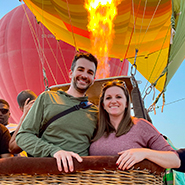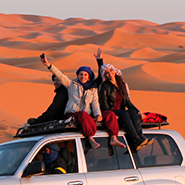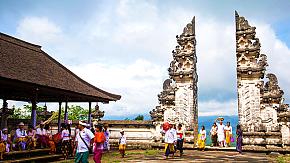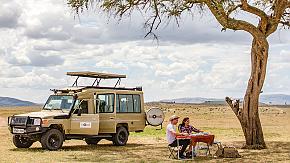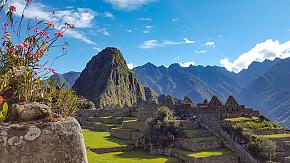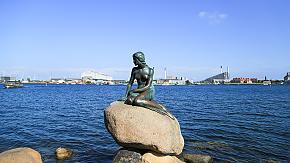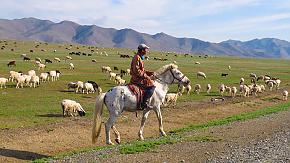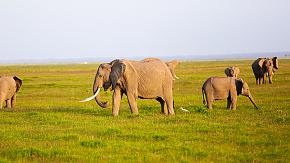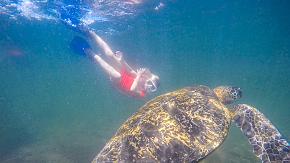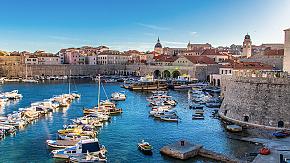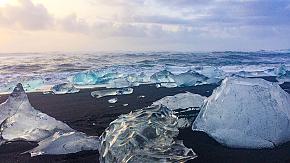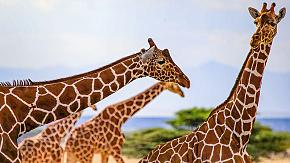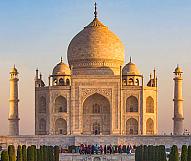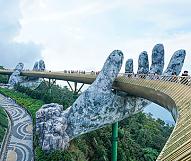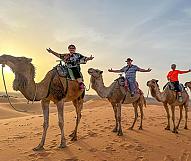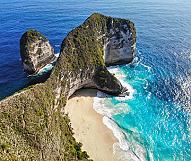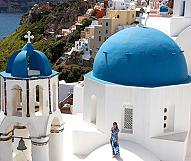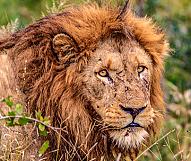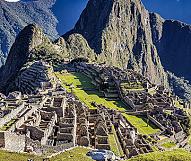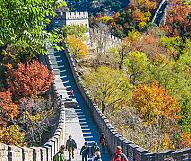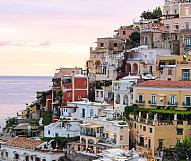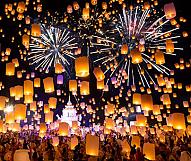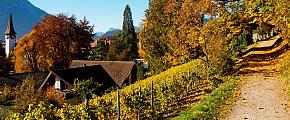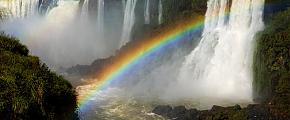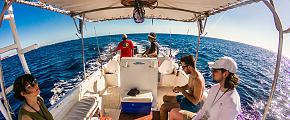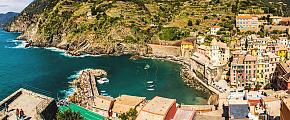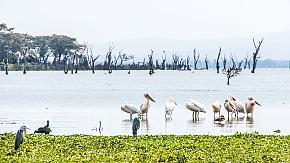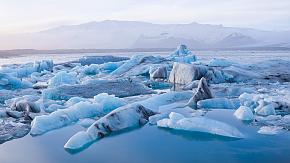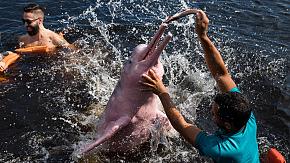10 Best Places to Travel in July 2026
Finding the best places to travel in July for your ideal summer vacation? Fly to Iceland to catch the midnight sun, witness the annual animal migration in Africa, or enjoy a Bali vacation with beaches and sunshine. Capture the joy of traveling in July with the top 10 places to visit below, and drive your soul to find the true meaning of the journey.
-
IndonesiaIndonesia Tours
The climate in Indonesia is a typical tropical one, with a warm climate all year round and an average temperature of about 28°C. Travel to Indonesia in July, you can make yourself lie on the beach, next to the lush coconut trees, looking at the azure sea with tranquil waves.
Bali Island is rich in beaches, shores, lakes, and several outlying islands with stunning scenery. Board a ferry for an exciting island-hopping adventure, or take your step on the stairs that lead you to the Lempuyang Temple and capture the amazing moment framed by the Gate of Heaven.
Also, let the green waves of coconut trees and rice fields in Ubud make your trip more special. Besides the rice fields, the hotels here are also very creative - bubble houses. Living in such a house, you can see the starry sky outside and blend in with nature, such an experience will add to your visit in July.
-
KenyaKenya Safari
July is the time for spectacular wildlife migration, with 1.4 million hornbills, 500,000 gazelles, 200,000 zebras, and many other East African herbivores and foliage eaters. Travel in July is sure to be an unforgettable safari experience where you can witness the grandeur and endless fascination of Kenya's wildlife world.
Including about 95 species of mammals and 450 species of birds, Masai Mara Natural Reserve is the most concentrated habitat for large wild mammals on earth. Many scenes from the famous TV program Animal World were shot here.
Otherwise, Mount Kenya, located in the center, with its peculiar geological structure, where volcanoes and snow-capped mountains coexist, attracts a large number of tourists to hike into its valleys and peaks. You can go deep into the lush forests to meet some alpine species, or to the summit, where you can capture the lovely snow peak usually hidden in the smoke.
-
PeruPeru Tours
July is the cool, dry season in Peru. When you set foot in this country, an adventure is about to begin. From jungle exploration to ocean surfing, from volcano trekking to horse racing on the grasslands, travel Peru in July allows you to take full advantage of all the wonderful things nature has to offer.
If you are a history buff, then Machu Picchu will surely be one of your best choices. Hidden in the clouds and mist, this mountain citadel, also known as the Lost City of the Incas, with temples and terraces still retains its ancient glory. You can take a train ride through the canyon, and up to the Sun Gate for a spectacular sunset.
Hiking enthusiasts will also find plenty of trails to get in touch with nature, whether you follow the famous Inca Trail through the cloud forest and alpine tundra, or make a stop at the Sacred Valley to catch a glimpse of the Qotacalla civilization.
-
DenmarkDenmark Vacation
Denmark, the cradle of Hans Christian Andersen's fairy tales, where the Little Mermaid sitting on the shore. For a Denmark journey, a visit in July is at its finest. You can admire the Renaissance castles on the long sandy beaches or by the lake, feel the human touch of Denmark on the bicycle paths in Bornholm, or enjoy Danish-style cuisine in a candlelit cafe.
Vejle is known for its greenery-covered mountains, beautiful fjords, busy harbor, bustling malls, pedestrian-friendly streets, and iconic windmills. You can start your July visit with the Romanesque and Gothic red brick St. Nicolai's Church built in the 13th century.
Copenhagen is the capital of Denmark, and it has an alias, the City of Bicycles. Locals like to ride bicycles when they go out grocery shopping, commute to work, and even to go out to parties. If you want to really get to know the city, then don't miss this way!
-
MongoliaMongolia Tours
Mongolia is desolate, pale, and with a hint of a wild Central Asian nomadic land. Travel in July here you can see the Gobi Desert stretched out, dotted with numerous flaming cliffs called Bayanzag, and walk through the green grasslands beside the trickling Orkhon River with spectacular waterfalls to catch.
Terelj National Park is one of the best places to visit in the Kent Mountains, where you can see the spectacular scenery with lofty mountains, dense forests, babbling rivers, and other unique natural landscapes, you can record all these stunning views.
Moreover, you can participate in the celebrations of the Naadam Festival and take part in some grassland activities such as horse riding, archery, etc. Stay in the Ger at the Terelj, eat the most authentic barbecue, sing, and dance with the locals around a bonfire, where you can feel like you've returned to nature.
-
UgandaUganda Safaris
Visit Uganda in July is the time when plants are in full bloom, suitable for going out to encounter some flora and fauna with sunny days, fresher air, and gentle breeze.
Head to Queen Elizabeth National Park for some typical African grassland scenery with its lovely crater lake, tree-climbing lions and more, or drive to Murchison National Park to begin an exciting safari with mountain gorillas. You can also go eastward to Jinja to let the exciting drop rafting move your summer heat.
Lake Victoria in Kampala is rich in tilapia and perch, and those who like to eat perch can feast on them here. Rent a boat and go fishing in the lake, watch the fishermen reel in their nets on the small islands, or boat into the swamp with your binoculars to capture some pretty birds.
-
EcuadorEcuador Vacation
Ecuador is a country that sleeps by the volcanoes, a pure and beautiful tourist destination that has not been over-exploited. The cool and humid weather, dense tropical rainforest, as well as hot springs and waterfalls, make Ecuador one of the best places to visit in July.
The Galapagos Islands is a place with unique flora and fauna. Town of Banos, the end of the world, where you can experience the thrill of swinging on top of a cliff and feeling infinitely close to a volcano.
Hidden deep in the Andean valley, where the Pastaza River flows through and the famous Tungurahua volcano is located in the south of the town, all these have contributed to the town forming an exclusive and unique climate and landscape. You can enjoy good food, hot springs, a view of the volcano, rent bicycles to swim in the waterfalls, or rent quad bikes to go up to the top of the mountain.
-
CroatiaCroatia Tours
July is perfect for traveling to Croatia. Whether you are a lover of history and culture, a lover of nature, or a lover of food, in Croatia you will find a place that you will love.
Flowers and trees are growing in abundance, and the scenery is charming around the national parks like the Adriatic Riviera, the Plitvice Lakes, and Brijuni Island. There are also numerous museums and world heritage sites. For example, Diocletian's Palace, a magnificent work of art.
The beauty of Dubrovnik lies in its grandeur and refinement, with the strongest medieval walls in existence, guarding churches and palaces of all ages. Walking around the battlements, you will have a wonderful view of the terracotta roofs of the old town and the sea. Sra Hill, located directly behind the town, offers a panoramic view of the entire city and the Adriatic Sea. A cable car or a walking path along the winding hillside are good ways to reach the summit.
-
IcelandIceland Vacation
July is the period of super long daylight in Iceland, also the time when you can capture the magical landscape of the midnight sun of the polar day due to its extremely high dimensional position in the Arctic Circle.
Iceland not only has several giant glaciers, but also over a hundred active volcanoes, where you can feel the mixture of ice and fire at once and experience the ultimate Icelandic adventure.
Travel in July, Iceland offers a wide range of tourist activities. You can soak in a hot spring in freezing weather and experience a different kind of wonderland. Horse riding and whale watching at sea are also among the most popular ways to travel in Iceland and are suitable for all ages. While enjoying the many beautiful sights, you can also sample the local cuisine and experience the unique Icelandic way of life.
-
TanzaniaTanzania Safari
The weather in Tanzania is cool and sunny in July, ideal for sightseeing and exploration. Its rich landscape has created a wildlife paradise with spectacular scenery. As one of the best African countries for safari, you are sure to experience the thrill of the wild.
With endless plains and a beautiful mountain horizon, the Serengeti National Park is famous for the great migration of millions of wildebeest, zebra, and other wildlife. It is home to four globally threatened or endangered species: black rhino, elephant, wild dog, and cheetah.
Zanzibar is made up of more than 20 small surrounding islands. The diverse population makes this a vibrant place to experience the unique local culture. Sitting on the boat, enjoying the sea breeze and watching the small fish in the sea rise and fall with the waves makes for a great July experience.
Travel Calendar for the Year of 2026
Your Dreamy Vacation is Waiting!
Personalized Itinerary, Premium Travel Experience...
